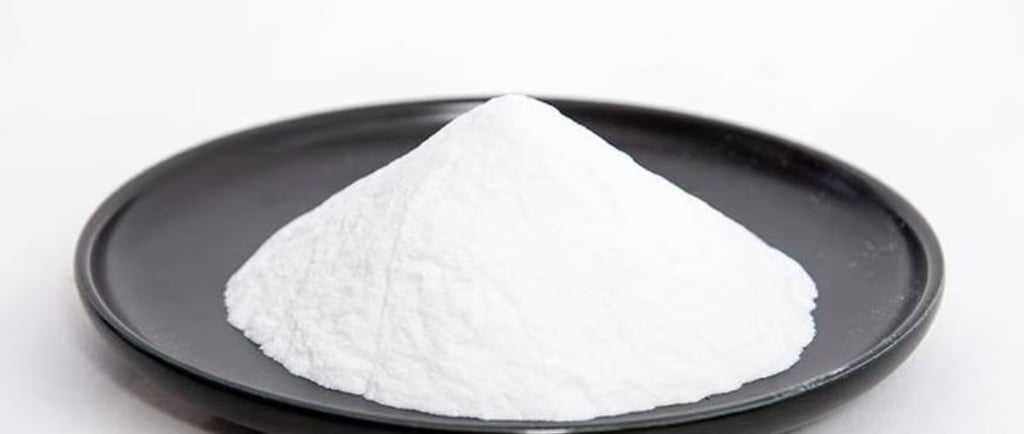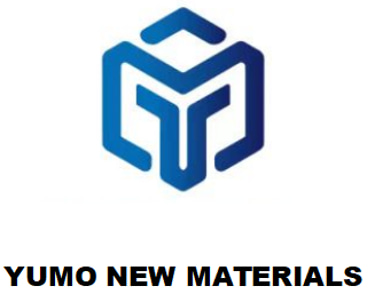HENAN YUMO: Engineered Precision, Uncompromised Performance
White Fused Alumina: The Ultimate Guide to Properties, Production, and Industrial Applications
Discover how white fused alumina (WFA) revolutionizes abrasives, refractories & advanced ceramics. Explore its manufacturing, technical specs, global uses, and why 75% of precision grinding relies on this synthetic mineral.
7/11/20254 min read


Introduction: The Unseen Engine of Precision
In the heart of every precision-ground aerospace component, behind the flawless finish of luxury automotive paint, and within the kilns forging tomorrow’s advanced ceramics, lies an unsung hero: White Fused Alumina (WFA). This synthetic material, with its snow-white crystals and near-diamond hardness, has become the cornerstone of industries demanding perfection. Unlike naturally occurring abrasives, WFA is engineered at the molecular level to deliver uncompromising performance where failure is not an option.
Chapter 1: Decoding the Science of White Fused Alumina
The Crystalline Anatomy of Performance
At its core, WFA is α-Al₂O₃ crystallized into a dense hexagonal lattice structure. This atomic arrangement grants it exceptional mechanical stability. When produced under controlled conditions, WFA achieves purity levels between 99.3% and 99.8% Al₂O₃ – significantly higher than brown fused alumina or natural corundum.
The characteristic white color isn’t merely aesthetic; it’s a visual indicator of low impurity content. Critical trace elements are meticulously controlled: Titanium dioxide (TiO₂) below 0.03% prevents crystal distortion, silica (SiO₂) under 0.08% ensures thermal shock resistance, and sodium oxide (Na₂O) less than 0.4% maintains consistent friability. These parameters collectively enable WFA’s legendary performance predictability.
Why Crystal Size Matters
During slow cooling in electric arc furnaces, WFA develops large, interlocked crystals typically ranging from 200 to 800 micrometers. This macrostructure is responsible for its unique self-sharpening behavior. When subjected to grinding pressure, crystals fracture along conchoidal planes, continuously generating fresh cutting edges while minimizing heat generation – a critical advantage when machining hardened tool steels or temperature-sensitive alloys.
Chapter 2: The Alchemy of Production – From Ore to Engineered Abrasive
Stage 1: Raw Material Refinement
The journey begins with calcined alumina derived from the Bayer process. Unlike lower-grade alternatives, WFA requires feed material with particle sizes tightly controlled between 5 and 20 micrometers. This precision ensures uniform melting and crystallization.
Stage 2: High-Intensity Fusion
In specialized three-phase submerged arc furnaces, temperatures exceeding 2,050°C transform alumina powder into molten corundum. The process lasts 60-80 hours, with cooling rates carefully modulated to grow crystals directionally. A unique "crust formation" technique seals the melt against atmospheric contamination, preserving chemical purity.
Stage 3: Precision Size Transformation
The cooled ingots undergo multi-stage processing:
Primary crushing through jaw crushers reduces the fused mass to 50mm chunks
Secondary roll milling achieves intermediate sizing
Final ball milling with alumina-lined equipment creates micron-scale particles
Air classification separates grains into 40+ standardized grit sizes
Advanced treatments may follow:
Acid Washing dissolves metallic residues using hydrochloric acid
Silane Functionalization bonds organosilane molecules to enhance resin compatibility
Spheroidization via plasma torches creates free-flowing granules for thermal spray
Chapter 3: The Performance Spectrum – Why Engineers Specify WFA
Mechanical Dominance
With a Knoop hardness of 2,100-2,300 and Mohs hardness of 9.0, WFA ranks among the hardest synthetic materials. Its true advantage lies in controlled friability – the ability to fracture predictably under load. This self-renewing cutting action maintains aggressive material removal rates while preventing workpiece burning.
Thermal Warrior Capabilities
WFA remains structurally stable up to 1,900°C, with thermal expansion coefficients of 8.6×10⁻⁶/K between 20-1,000°C. In refractory applications, it resists slag penetration better than zirconia-based alternatives, extending furnace lining lifespan by 30-40% in steel ladles and cement rotary kilns.
Chemical Inertness as a Strategic Advantage
Unlike silicon carbide which oxidizes above 1,000°C, or diamond that graphitizes at 800°C, WFA maintains integrity in acidic/alkaline environments. This makes it indispensable for wet grinding of stainless steel where iron contamination must be avoided, or polishing optical glass where chemical stability ensures scratch-free finishes.
Chapter 4: Industrial Applications – Where Theory Meets the Factory Floor
Abrasives Sector: The Cutting Edge of Innovation
Resin-Bonded Grinding Wheels: WFA's sharp fracture edges cut hardened steel (HRC 60+) at 25% faster rates than brown alumina while reducing thermal damage
Coated Abrasives: As the backbone of premium sandpaper, its uniform grain structure achieves surface finishes under Ra 0.1μm
Lapping & Polishing: Ultrafine WFA (0.5-5μm) produces mirror finishes on semiconductor wafers with zero ionic contamination
Refractory Engineering: Defying Extreme Environments
Monolithic Linings: WFA aggregates in low-cement castables withstand 1,750°C molten aluminum corrosion
Kiln Furniture: High-purity setters enable zero-defect firing of technical ceramics
Insulation Modules: Low thermal conductivity (2.5 W/m·K) improves energy efficiency in heat-treat furnaces
Advanced Manufacturing Frontiers
Ceramic Matrix Composites: WFA fibers reinforce jet engine turbine blades
Anti-Wear Coatings: Plasma-sprayed WFA extends component life in mining equipment
3D Printing: Binder jetting creates complex alumina prototypes with 99.5% density
Chapter 5: Navigating the Selection Process – A Technical Buyer’s Guide
Decoding Grit Classification Systems
Understanding global standards prevents costly specification errors:
FEPA "F" Standards govern loose abrasives for blasting and polishing
FEPA "P" Designations control bonded abrasive grain distributions
JIS Japanese Standards offer finer gradations for electronics applications
Performance-Optimized Grades
Standard Grade: General-purpose grinding of alloy steels
Heat-Treated (HT): Enhanced toughness for stainless steel and superalloys
Ultra-Blue (UB): Acid-washed for critical polishing applications
Silane-Coated: Engineered for epoxy/phenolic tooling with 40% stronger bonds
The Economics of Abrasive Efficiency
While WFA carries a 15-20% cost premium over brown alumina, its true value emerges through total operational savings:
30% longer wheel life in precision grinding
22% reduction in polishing time for aerospace components
50% less abrasive consumption in vibratory finishing
Chapter 6: The Future Engineered – Next-Generation WFA Technologies
Nano-Engineered Grains
Pioneering manufacturers like YUMO Advanced Materials now produce sub-micron WFA (0.2-0.5μm) with laser-sorted particle distributions. These enable:
Atomic-level surface finishes on silicon carbide wafers
High-definition optical coatings without orange-peel effect
Dental ceramics with sub-micron accuracy
Surface Modification Breakthroughs
Advanced functionalization techniques are redefining WFA’s capabilities:
Amino-Silane Treatments: Create covalent bonds with epoxy resins, eliminating grain shedding
Plasma Polymerization: Deposits nano-scale polymer films for lubricious grinding
Zirconia Hybridization: Forms eutectic composites with 30% higher fracture toughness
Sustainable Manufacturing Renaissance
Modern production facilities now integrate:
Closed-loop water recycling systems
Electric arc furnaces powered by renewable energy
AI-controlled kilns reducing energy consumption by 25%
Zero-waste crushing processes with recycled abrasive fines
Conclusion: The Uncompromising Standard
From the workshop to the semiconductor cleanroom, White Fused Alumina continues to set the benchmark for abrasive excellence. Its unique combination of hardness, purity, and thermal stability makes it irreplaceable in applications where failure carries catastrophic consequences. As additive manufacturing, space exploration, and quantum computing push material requirements to new extremes, WFA evolves through continuous innovation – ensuring it remains at the forefront of precision engineering for decades to come.
At YUMO Advanced Materials, we engineer these extraordinary crystals not just as commodities, but as enablers of human progress. Because when perfection is non-negotiable, only the most meticulously crafted materials will do.
